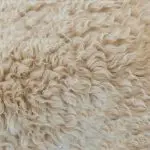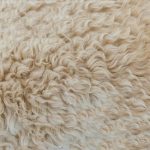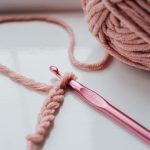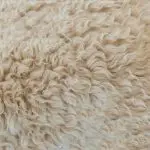Do you ever wonder how that soft and luxurious angora sweater is made?
In this article, we will take you through the fascinating process of turning angora wool into fabric.
You’ll learn about the origin of angora wool, how the fibers are harvested, and the step-by-step process of processing and spinning the wool into yarn.
Finally, we will explore the intricate art of weaving, where the angora yarn is transformed into the beautiful and cozy fabric you love.
Table of Contents
The Origin of Angora Wool
Angora wool is derived from the fur of Angora rabbits. There are several different breeds of Angora rabbits that are specifically bred for their soft and luxurious wool. These breeds include English Angora, French Angora, Giant Angora, and Satin Angora. Each breed has its own unique characteristics and qualities that make their wool desirable for different purposes.
When it comes to Angora wool production, there are specific techniques that are used to harvest the wool from the rabbits. The rabbits are carefully groomed and their fur is gently plucked or sheared, depending on the breed and the desired length of the wool. This process is done in a way that ensures the rabbits are comfortable and not harmed in any way.
Once the wool is harvested, it undergoes a series of steps to turn it into fabric. The wool is first cleaned and washed to remove any dirt or debris. Then, it is spun into yarn using specialized spinning machines. Finally, the yarn is woven or knit into fabric, which can then be used to make various clothing items, accessories, and home furnishings.
Harvesting Angora Fibers
To create fabric, angora fibers are harvested and processed into yarn. Angora wool comes from the soft and fluffy fur of the Angora rabbit breeds, which are known for their long and silky hair. These rabbits are carefully bred for their luxurious fur, which is then sheared or plucked from their bodies. The harvested fibers are then cleaned and sorted to remove any impurities or debris.
Once the fibers are clean, they are ready to be spun into yarn. Knitting patterns for angora yarn are popular among crafters due to its warmth and softness. The yarn can be used to create a variety of garments, including sweaters, scarves, and hats. Its luxurious feel and lightweight nature make it a favorite choice for those looking for cozy and comfortable pieces.
When working with angora yarn, it is important to choose the right knitting pattern to showcase its unique qualities. Patterns that feature delicate lacework or textured stitches can enhance the beauty of angora yarn, while simple stitches can highlight its softness and warmth. Whether you’re an experienced knitter or a beginner, there are countless patterns available to suit your skill level and personal style.
Processing Angora Wool
Once the fibers are cleaned and sorted, they’re ready for spinning into yarn. The cleaning process is essential to remove any impurities and dirt from the angora wool. The fibers are first washed using a mild detergent to gently cleanse them without causing any damage. After washing, the fibers are rinsed thoroughly to ensure all the soap residue is removed. Once cleaned, the fibers are carefully sorted based on their length and quality.
Dyeing techniques play a crucial role in enhancing the appearance of angora wool. The fibers can be dyed using various methods such as immersion dyeing or hand painting. In immersion dyeing, the cleaned fibers are soaked in a dye bath, allowing the color to penetrate evenly throughout the wool. Hand painting involves applying dyes directly onto the fibers using brushes or other tools, creating unique patterns and designs.
After dyeing, the fibers are rinsed again to remove any excess dye. They are then carefully dried, either by air-drying or using specialized drying equipment. Once dry, the fibers are ready to be spun into yarn, which can be used to create various textile products like sweaters, scarves, and hats.
Overall, the cleaning process and dyeing techniques are crucial steps in processing angora wool, ensuring that it is clean, vibrant, and ready for the next stage of production.
Spinning Angora Yarn
When spinning angora yarn, you’ll need to carefully twist the fibers together to create a strong and cohesive thread. This process can be done through hand spinning or commercial spinning.
Hand spinning is a traditional method where the spinner uses a spinning wheel or spindle to twist the fibers together manually. It requires skill, patience, and attention to detail. Hand spinning allows for more control over the thickness and texture of the yarn, resulting in unique and personalized creations.
On the other hand, commercial spinning involves using large-scale machinery to spin the angora fibers into yarn. This method is faster and more efficient, allowing for mass production of yarn. Commercial spinning ensures consistent quality and uniformity in the yarn, making it suitable for large-scale manufacturing of angora fabric.
Whether you choose to hand spin or opt for commercial spinning, the key is to ensure that the angora fibers are carefully twisted together to create a strong and durable yarn. This will ensure that the resulting fabric is soft, warm, and luxurious.
Weaving Angora Fabric
As you weave angora yarn, you’ll notice the softness and warmth of the fabric coming together to create a luxurious and cozy textile. Angora fabric possesses unique properties that make it highly desirable. Here are three characteristics that set it apart:
-
Insulation: Angora fibers have excellent thermal properties, providing exceptional insulation. This fabric is perfect for cold weather garments, as it traps heat close to your body, keeping you warm and snug.
-
Softness: Angora wool is renowned for its incredible softness. The fine fibers create a fabric that feels gentle against your skin, making it a popular choice for those seeking comfort and luxury.
-
Lightweight: Despite its warmth, angora fabric is incredibly lightweight. This makes it ideal for layering and prevents you from feeling weighed down by heavy garments, allowing for ease of movement and comfort.
To ensure the longevity of your angora fabric, proper care and maintenance are essential. Here are a few tips:
-
Hand wash: To avoid damaging the delicate fibers, it is recommended to hand wash angora garments using mild detergent and cold water. Avoid wringing or twisting the fabric.
-
Drying: Gently squeeze out excess water and lay the garment flat on a towel to air dry. Avoid direct sunlight or heat sources, as they can cause the fabric to shrink or lose its shape.
-
Storage: Store your angora garments folded neatly in a cool, dry place. Avoid hanging them, as this can stretch the fabric. Additionally, keep them away from moths by using mothballs or cedar blocks.
Conclusion
So there you have it, now you know how angora wool is made into fabric.
Starting from the harvesting of angora fibers, they go through a careful processing and spinning process to create the soft and luxurious angora yarn.
Finally, this yarn is woven into beautiful angora fabric.
It’s fascinating to see how this natural material transforms into a wearable textile.
The next time you wear angora clothing, you can appreciate the craftsmanship and effort that goes into creating it.






